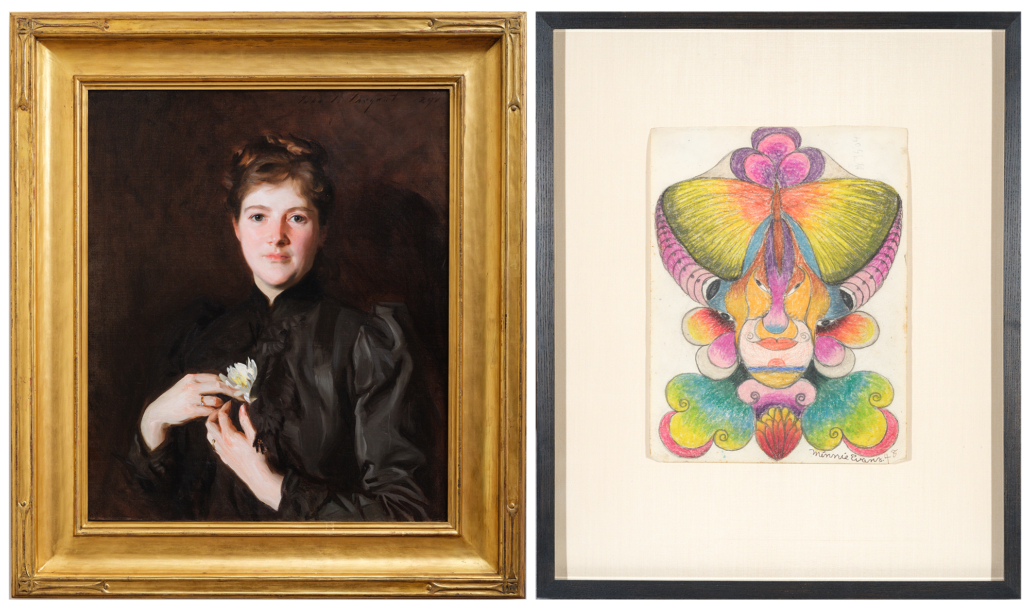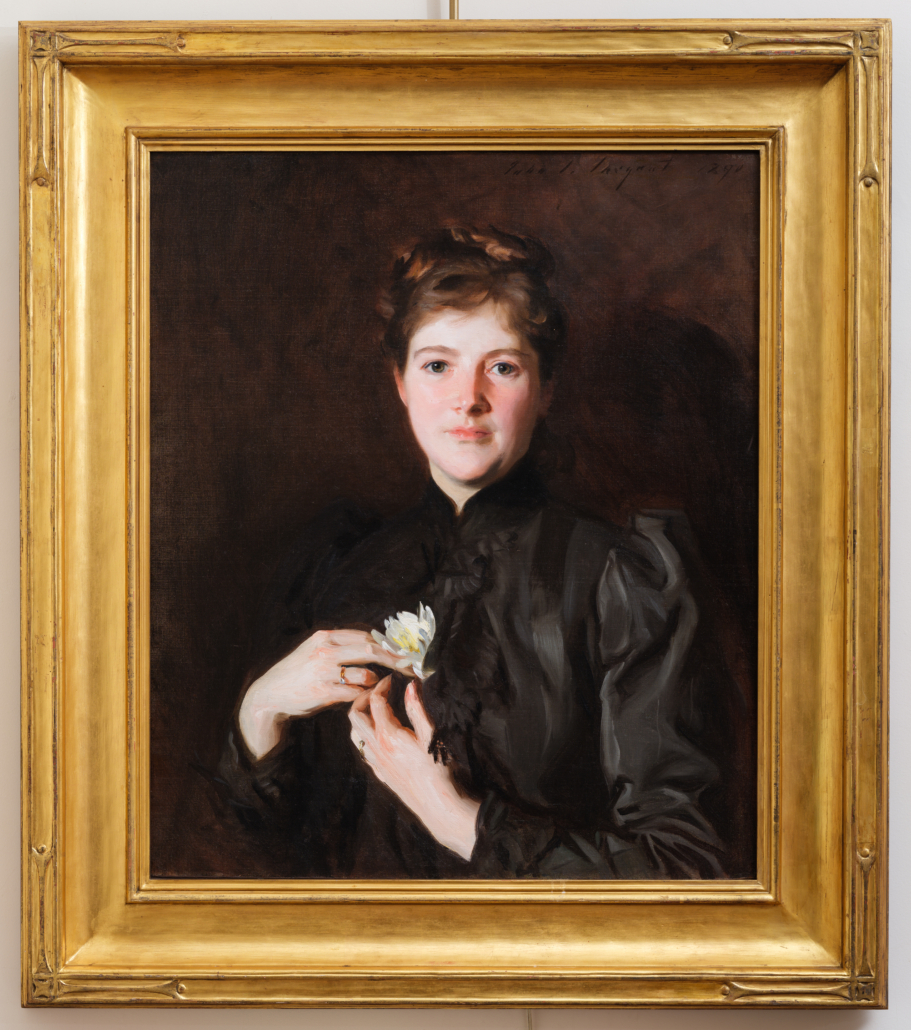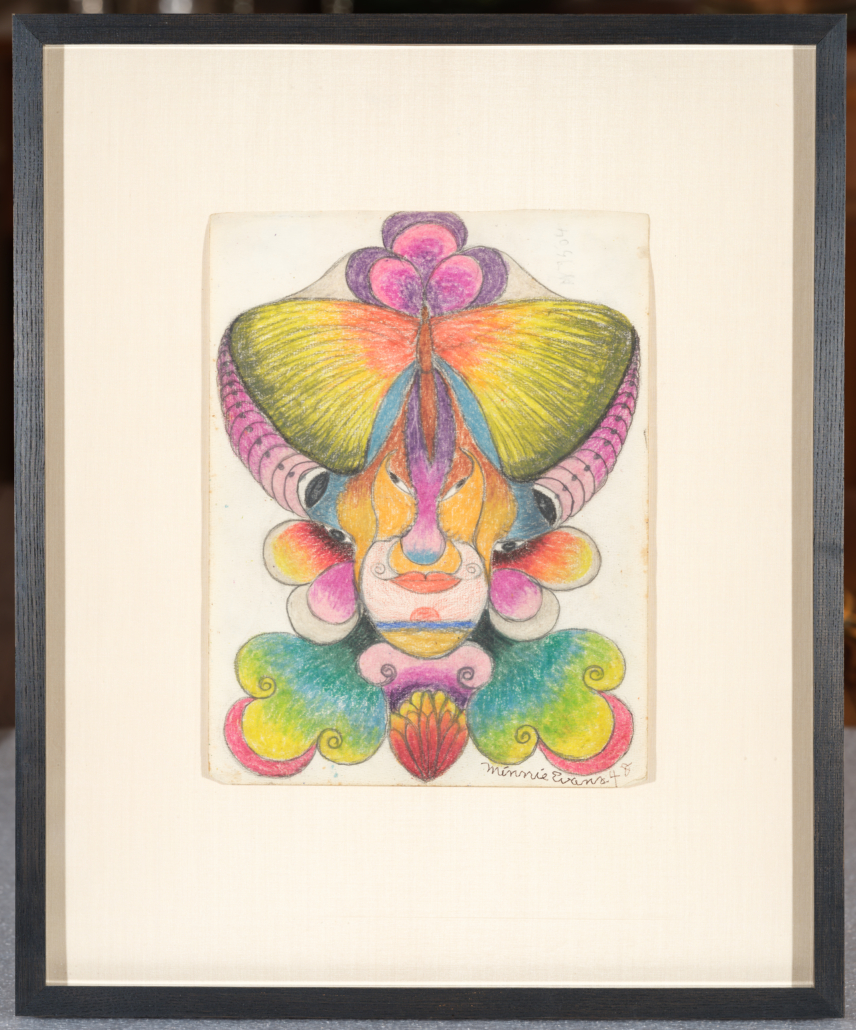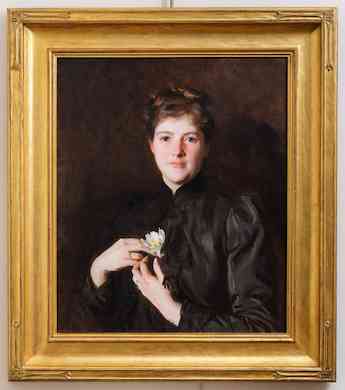
WINSTON-SALEM, N.C. — The Reynolda House Museum of American Art has announced that Mr. and Mrs. Leslie Baker of Winston-Salem have offered the museum a portrait of Mrs. Augustus Hemenway by John Singer Sargent and an untitled drawing by the self-taught African American artist from North Carolina, Minnie Evans.
“We wanted to ensure these gifts would be in a place where they could serve the widest possible audience, and Reynolda House is extremely committed to strengthening the community through its educational mission,” said the Bakers. “We are excited that the works by Minnie Evans and John Singer Sargent will be used as teaching tools for generations to come.”
Sargent’s portrait of Harriet Hemenway will join another painting by the artist at Reynolda — his portrait of the Marchesa Laura Spinola Nunez del Castillo from 1903 is on long-term loan from museum founder Barbara Babcock Millhouse.
“I am thrilled that the portrait of Harriet Hemenway will continue to inspire at Reynolda,” said Millhouse. “John Singer Sargent’s portrayal of Hemenway can be classified as among his absolute best.”
The most popular portrait painter of the Gilded Age, John Singer Sargent (American, 1856-1925) described himself as “a man of prodigious talent.” Painting in Paris, London, New York and Boston, Sargent was known to invest in his subjects with elegance, vitality and keen psychological insights.

Mrs. Augustus Hemenway, or Harriet Hemenway, was a prominent woman in Boston society, known primarily as the founder of the Massachusetts Audubon Society. Harriet’s actions stemmed from her horror at the practice of killing birds for their feathers, which were used to decorate women’s hats. According to John H. Mitchell, writing in Sanctuary: The Journal of the Massachusetts Audubon Society, “One of the seminal events in the history of activism in this country took place in a parlor in Boston’s Back Bay in 1896. On a January afternoon, that year, one of the scions of Boston society, Mrs. Harriet Lawrence Hemenway, happened to read an article that described in graphic detail the aftereffects of a plume hunter’s rampage — dead, skinned birds everywhere on the ground … She carried the article across Clarendon Street to her cousin Minna B. Hall. There, over tea, they began to plot a strategy to put a halt to the cruel slaughter of birds for their feathers.” The result was the Massachusetts Audubon Society, which led to the foundation of the National Audubon Society.
According to the sitter’s granddaughter, Augustus Hemenway asked his wife to commission a portrait from Sargent when the artist was visiting Boston. After offering her children as subjects, Harriet agreed to sit for the artist at his request. Sargent disguised Harriet’s pregnancy in the folds of her black dress and behind the elegant gesture of her hands holding a flower. Harriet’s granddaughter Elvine recalled, “When the head seemed finished, he asked her to put her hands in some interesting way, and as they were trying various positions, he saw a vase of white flowers in the room and gave her one to hold.” Mitchell stated that the flower was a water lily, which was “symbolic language proclaiming her condition [of pregnancy], and a rare, even shocking public announcement for the period.”

Born in Long Creek, North Carolina, Minnie Evans (1892-1987) was a self-taught African American artist. She began drawing in middle age, and attributed her compulsion to make art to divine inspiration. Her work is known to be characterized by an emphatic symmetry, vivid colors and imagery that combines human faces and natural forms.
Scholars attribute Evans’s frequent use of plant forms in her drawings to her employment as a gate attendant at Airlie Gardens in Wilmington, North Carolina. She said, “Sometimes I want to get off in the garden to talk with God. I have the blooms, and when the blooms are gone, I love to watch the green. God dressed the world in green.”
Her drawing depicts a mythical creature with eyes, a nose and a mouth located on a strong central axis. The top of the figure’s head resembles a butterfly, and petal-like forms sprout from the head and neck. Below the figure’s mouth, a sun sets above a blue and green sea on the creature’s chin. Green forms marked by scrolling black lines occupy the figure’s shoulders, while a red-orange and yellow flower blooms in the center bottom portion of the drawing. The effect is mysterious and otherworldly, a product of the artist’s dreams.
The works will be on view in the library of the historic house beginning February 15.
Visit the website of the Reynolda House Museum of American Art.


